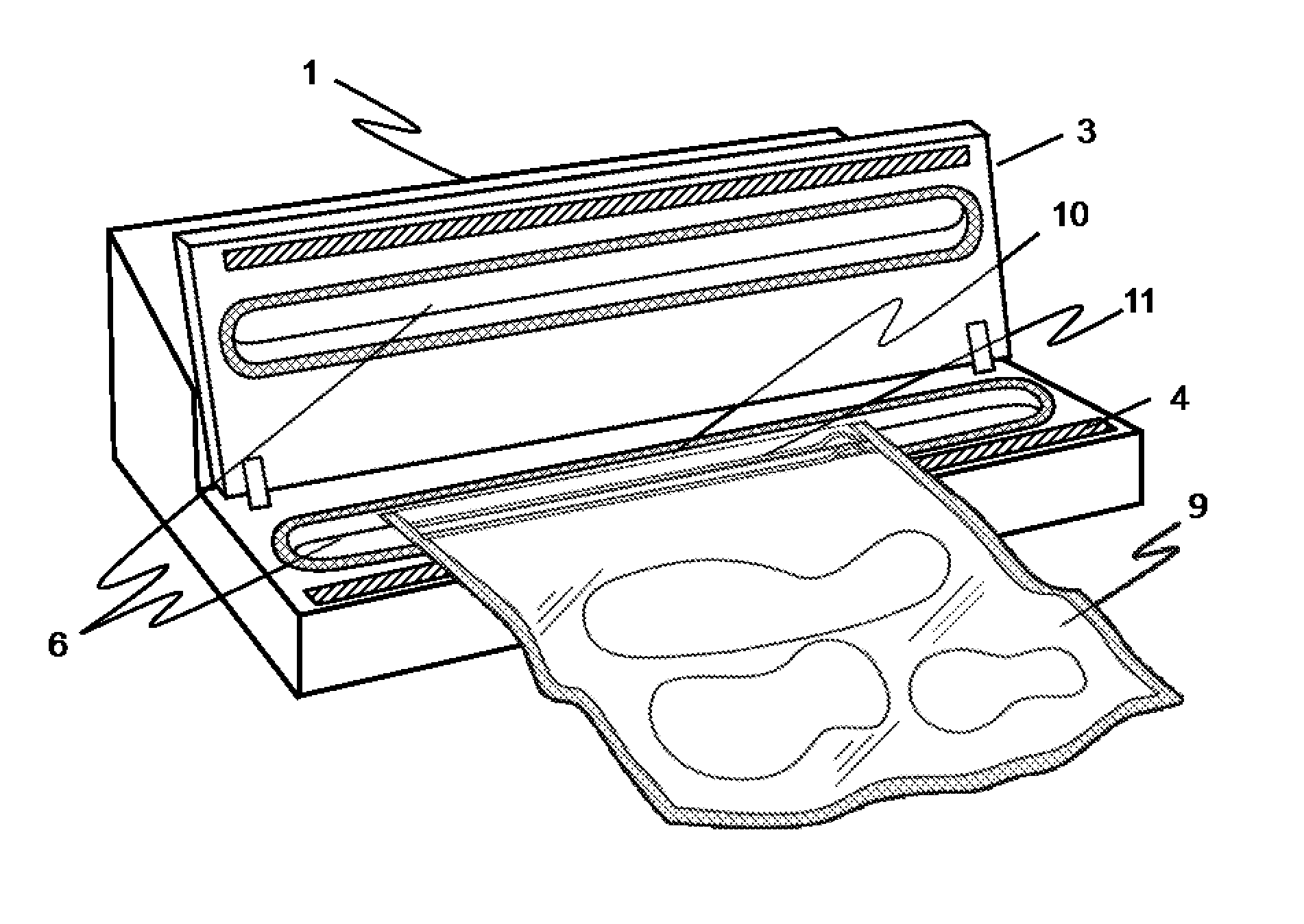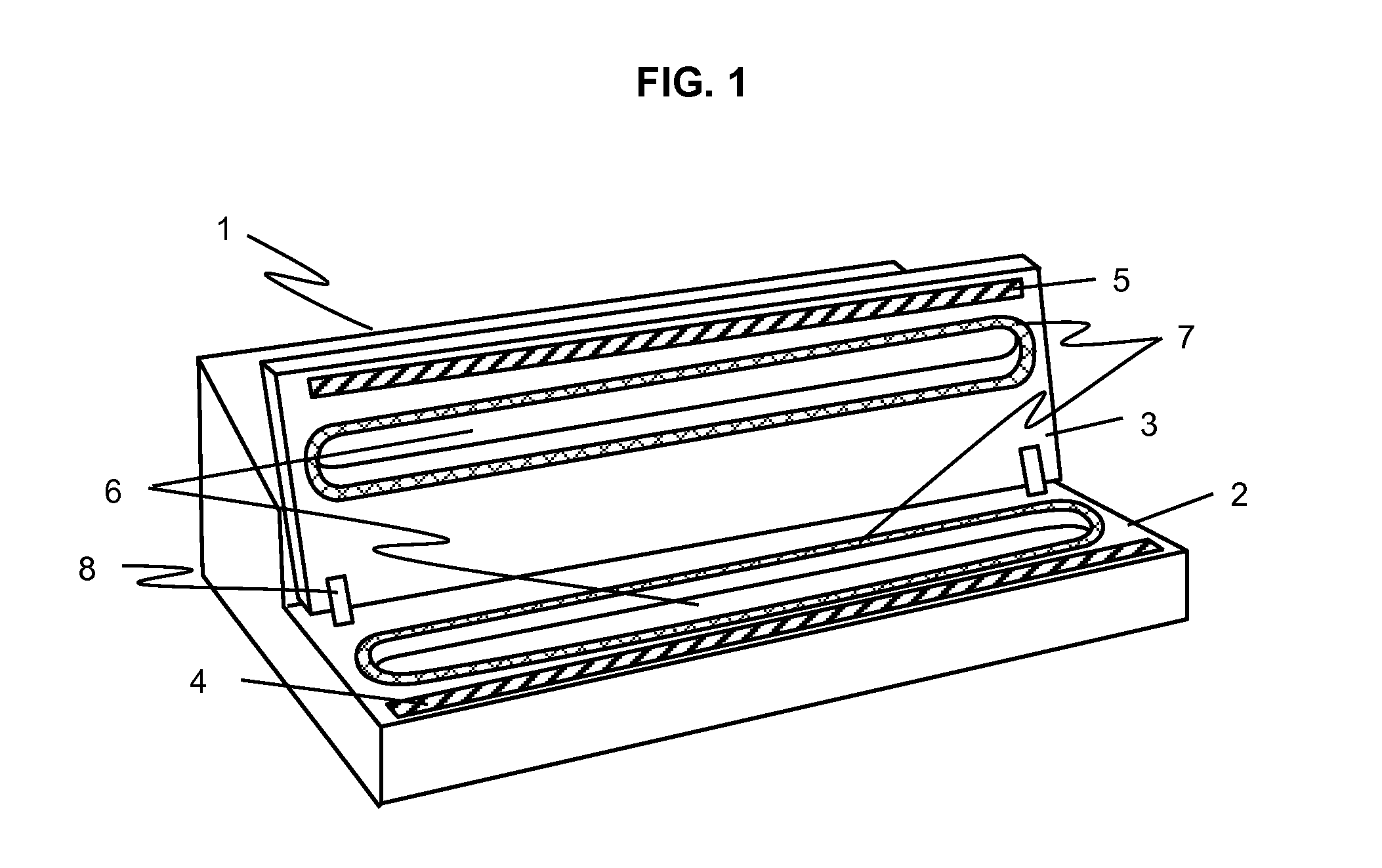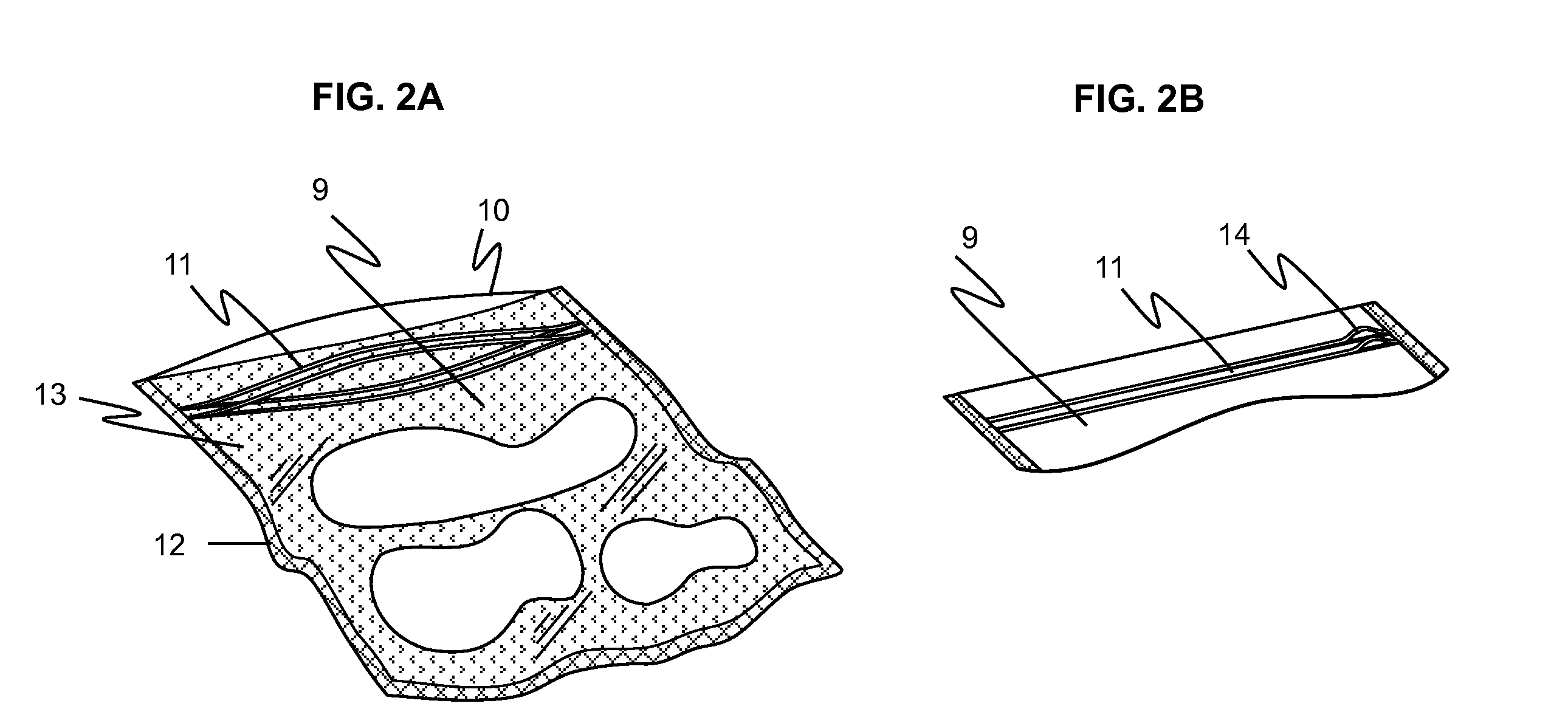Method and apparatus for vacuum packing resealable bags
a vacuum packing and sealing bag technology, applied in the field of vacuum packing sealing bags, can solve the problems of not being able to be found away from home, the mechanical sealing of sealing bags adds cost to every bag, and the bag loss of heat sealing bags, etc., to achieve the effect of restricting air flow
- Summary
- Abstract
- Description
- Claims
- Application Information
AI Technical Summary
Benefits of technology
Problems solved by technology
Method used
Image
Examples
Embodiment Construction
[0015]The present invention discloses a method and apparatus for closing a resealable vacuum bag while the vacuum bag is still inside the vacuum chamber of a heat-sealing vacuum packing machine. The resealable bag may be closed, at least temporally, by either (1) the compressive forces that vacuum packing machines exert against the sides of vacuum bags, or (2) an autonomous, vacuum-activated device that closes the open section of the vacuum bag's sealing strip. Finally, the cost of the resealable vacuum bag may be minimized by eliminating the air valve that is imbedded in the sides of conventional resealable vacuum bags, but which is superfluous for the present invention.
[0016]A key step in the vacuum-packing process disclosed herein is closing all but a small section of the vacuum bag's sealing strip prior to vacuuming. Doing this (1) restricts that area through which air may reenter the bag when it is withdrawn from the vacuum chamber, and (2) makes it easier to completely close t...
PUM
 Login to View More
Login to View More Abstract
Description
Claims
Application Information
 Login to View More
Login to View More - R&D
- Intellectual Property
- Life Sciences
- Materials
- Tech Scout
- Unparalleled Data Quality
- Higher Quality Content
- 60% Fewer Hallucinations
Browse by: Latest US Patents, China's latest patents, Technical Efficacy Thesaurus, Application Domain, Technology Topic, Popular Technical Reports.
© 2025 PatSnap. All rights reserved.Legal|Privacy policy|Modern Slavery Act Transparency Statement|Sitemap|About US| Contact US: help@patsnap.com



